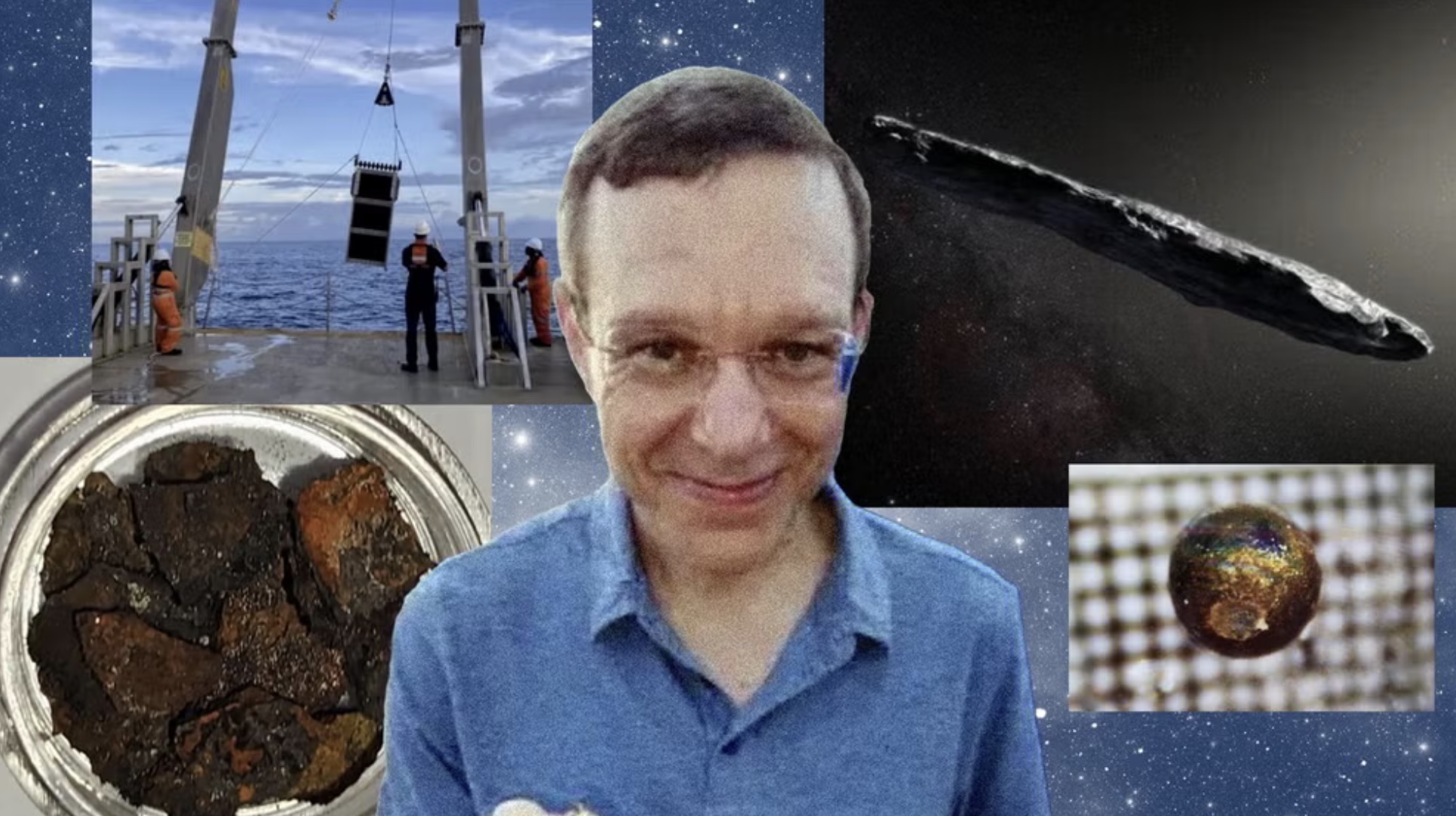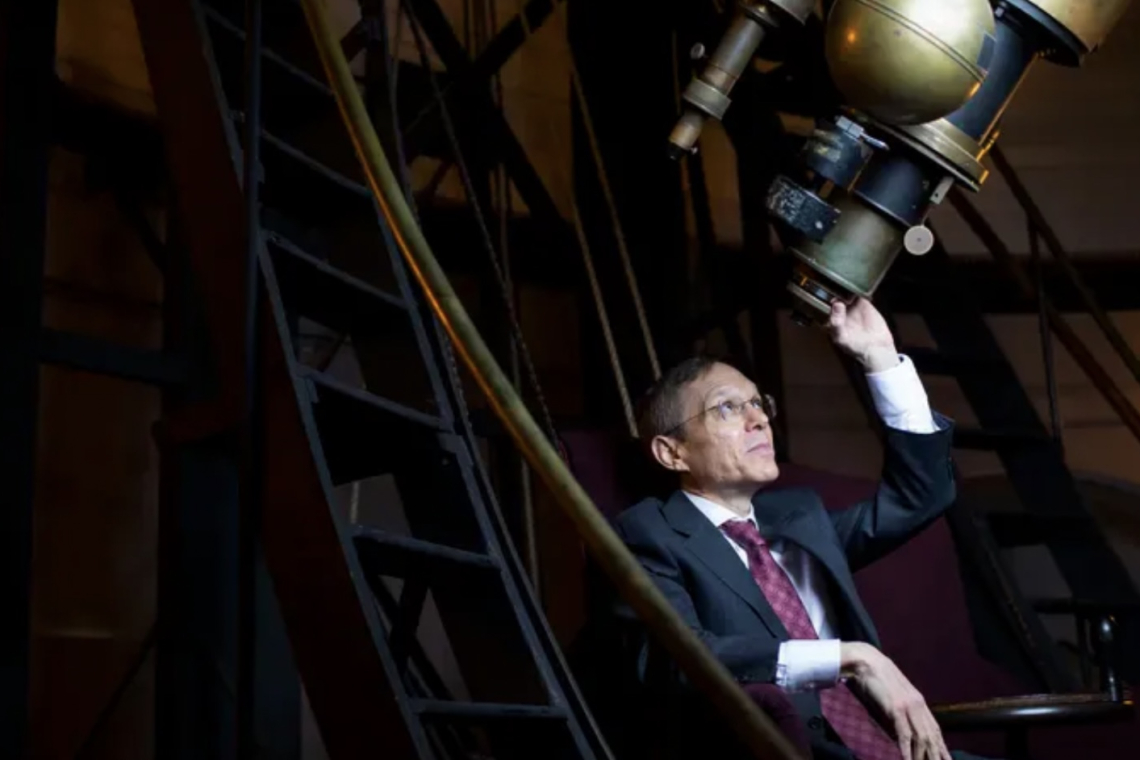Avi Loeb has a chip on his shoulder. For years, the Harvard astrophysicist has been trying to find aliens. He’s in the middle of trying to record the entire sky with an international network of telescopes and recently travelled to Papua New Guinea to find out if a meteor detected in 2014 was actually part of an interstellar spaceship.
Meanwhile, academics and pundits snipe at him in the media, and he’s sick of it.
“I hear that the scientists say: ‘Why would you go to the Pacific Ocean? It’s a waste of time, waste of energy.’ And I say: ‘I’m not taking any of your research money; I’m not asking you to do anything. I’m doing the heavy lifting.’ Why would they be negative about it?” Loeb complains as he shows me around his mansion in Lexington, Massachusetts, one of the richest boroughs in the US. He’s busy rehearsing for a one-man show about his life and work, which he’ll perform in his attic tomorrow. Apparently, I’m the “only journalist to be invited”, apart from the camera crew filming a documentary.
A distinguished scientist, Loeb has published hundreds of papers, as well as a bestselling book, Extraterrestrial: The First Sign of Intelligent Life Beyond Earth. He’s the Frank B Baird Jr professor of science at Harvard, the director of the Institute for Theory and Computation at the Center for Astrophysics, and the director of the Galileo project at Harvard. But he was relatively unknown until a peculiarly shaped object zoomed through our solar system in 2017. Astronomers described it as having “extreme dimensions” and concluded it must be interstellar. Officially known as 1I/2017 U1, it was given the nickname ’Oumuamua – Hawaiian for “scout” or “first distant messenger” and pronounced like a child startled by a cow: Oh mooer mooer.

’Oumuamua was long, thin and flat, like a pancake. After further analysis, astronomers spotted more anomalies. They determined that before telescopes detected the object, it had accelerated while travelling past the sun. This is normal for comets, rocky icebergs that melt in the heat and release gases that act like booster rockets. This is what gives comets their signature tail, but this asteroid didn’t have one.
According to Loeb: “No tail, no comet.” In a paper co-written with Sean Kirkpatrick, the director of the All-domain Anomaly Resolution Office, which investigates UFOs for the US Department of Defense, Loeb later hypothesised that ’Oumuamua could be a solar sail from an interstellar craft, using sunlight to accelerate through space. In other words, it belonged to aliens.
In what was a big year for UFO-hunters, 2017 was the year that the Pentagon admitted to investigating UFOs. The $22m budget was reportedly also used to investigate alleged UFO sightings and all manner of unexplained goings on. Loeb rode the wave of interest to international fame.
When author meet Loeb, he was a few months back from his expedition to Papua New Guinea, where he collected spherules – tiny glassy beads of metal and rock – debris from the 2014 meteorite. US Space Command telescopes, designed to detect enemy missiles, tracked the meteorite. Exactly how the trajectories and positions of objects are measured is classified, but it claimed to be “99.999%” certain that the fireball’s origins were interstellar. Loeb believes that because the meteorite was travelling so fast, and did not burn up high above the Earth, it must have been made of something more robust, even artificial.
“This object was faster than 95% of the stars near the sun, relative to what is called the local standard. That’s what led me originally to suspect maybe it’s a spacecraft,” Loeb says, glee written all over his face. “It was able to maintain its integrity to very high stress. And so, we said it must be tougher than even iron meteorites.”
So far, Loeb and his team have only recovered small spherules from the path of the meteorite – a bit like collecting water droplets that have cascaded from a burst water balloon – but they are planning on heading out next spring to look for bigger pieces. “Then you can easily tell if it’s a rock or a technological gadget base. And, of course, if it’s a gadget, it would have screws, it would have perhaps buttons on it,” he says.
This is one of the central questions of alien hunting: do we actually want to find them? Is it a good idea to reach out to species that could be just as violent as humans, as well as more advanced?
“I’ll tell you what bothers me the most,” Loeb says. “It’s not so much that curiosity could be dangerous – it’s that childlike bullying is more prevalent than childlike curiosity in academia. People just try to step on every flower that rises above the grass level. This negativity is very damaging because it suppresses innovation.”
Loeb’s critics would counter that he is prone to making extraordinary claims without good evidence. Before heading to Papua New Guinea, Loeb advertised his expedition on a giant screen in Times Square. He then liveblogged his discoveries from the Pacific. His detractors say this approach misleads the public and distorts how “real science” is done.
They may have a point. After collecting the spherules, Loeb declared on television that his discovery was “the first time that humans hold material belonging to a big object that came from outside the solar system.” But at the time it wasn’t clear where the spherules had come from. It still isn’t.
Spherules cover the Earth, and most aren’t from meteorites. Their origins range from volcanoes to the Industrial Revolution and the iron age. As it turns out, Harvard’s analysis showed the samples had unusual compositions, but whether they belong to the meteorite Loeb is looking for, let alone if that in turn was created by extraterrestrials, will require much more research.
Loeb sees his detractors as self-important and jealous, as well as myopic and risk-averse in the extreme. He strongly believes that blogging his research improves public understanding of the scientific process. “Some people told me: ‘It’s the first time we see how science is done. Because we often hear just in press conferences the final result.’ They [scientists] sit on a stage and tell the public what the truth is, and the public doesn’t like that because it appears like the work of the elite,” he says. He insists his blogs are like detective stories. “And the public loves detective stories. I mean, what’s the problem?”
The problem, of course, is that scientists usually keep quiet until their peers have had a proper look at their work. “That’s another way to do it,” Loeb said when the New York Times put this to him in August. “But it was not a crime.”
What is criminal, he suggests, is the underfunding of his chosen field, especially compared with something like Cern. “The Large Hadron Collider was billions of dollars looking for supersymmetry, and it’s not there. They haven’t found it.” He’s not a big fan of theoretical physicists, either. “There is a whole community of people trying to unify quantum mechanics and gravity. These are people working on string theory, extra dimensions and the multiverse, and they don’t have a single piece of evidence, yet they work on it for decades. And they think that they are promoting the frontier of physics.”



